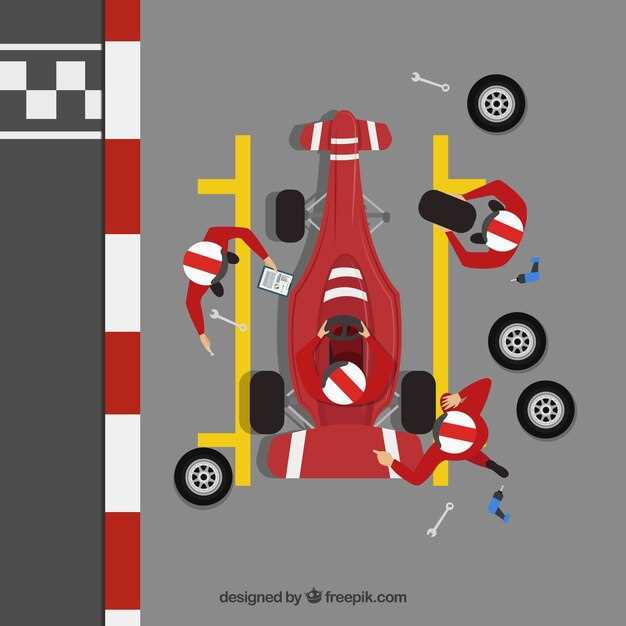
The history of Formula One is a captivating journey that reflects the relentless pursuit of speed, technology, and innovation. Since its inception in the early 20th century, F1 has evolved dramatically, shaping the very essence of motorsport. Each decade has brought about significant changes in design, engineering, and safety, marking milestones that have left an indelible mark on racing enthusiasts and car manufacturers alike.
As we explore the evolution of Formula One cars, it becomes evident that every era has its own unique characteristics. From the sleek and simple designs of the 1950s to the technologically advanced machines of the 2020s, the developments witnessed in F1 not only demonstrate a leap in performance but also a response to the ever-growing demands for safety and efficiency on the track. Understanding this progression allows us to appreciate not just the cars themselves, but the rich tapestry of history that surrounds them.
In this article, we will delve into the transformative changes that have defined Formula One cars over the decades, examining the shifting philosophies of design, the introduction of groundbreaking technologies, and the impact of regulations that have shaped the sport we know today. Join us as we accelerate through time to uncover the fascinating evolution of F1 cars and their place in the storied history of motorsport.
How Aerodynamics Shaped F1 Car Design from the 1960s to the 2020s
Aerodynamics has played a crucial role in the evolution of F1 car design, influencing performance, speed, and safety from the 1960s to the 2020s. In the 1960s, the focus on aerodynamics was minimal; engineers primarily prioritized weight reduction and mechanical reliability. The iconic Ford-Cosworth DFV engine, introduced in 1967, accompanied simple body shapes that minimized drag but lacked sophisticated aerodynamic features.
By the 1970s, the understanding of aerodynamic principles began to shift. Ground effect, where the car’s underbody generated downforce by creating a low-pressure area beneath, became pivotal. Teams such as Lotus pioneered this technology with the Lotus 79, showcasing how effective aerodynamics could enhance cornering speed. This innovation laid the groundwork for future designs, emphasizing the need for streamlined shapes and adjustable wings.
The 1980s brought further advancements as computer-aided design became more prevalent. Teams began to utilize wind tunnels to study airflow around their cars, leading to the introduction of complex front and rear wings. The McLaren MP4/2 is a prime example, combining a powerful turbocharged engine with an advanced aerodynamic package, ultimately dominating the decade.
The 1990s saw teams like Williams and Ferrari push the limits of aerodynamic efficiency. Innovations included active suspension systems that adapted to track conditions, enhancing grip and stability. The design of the cars became more aggressive, featuring sculpted surfaces and intricate wing configurations that maximized downforce while minimizing drag.
Entering the 2000s, regulations began to tighten, focusing on safety and reducing downforce to make the racing more competitive. However, teams continued to exploit aerodynamic advancements creatively. The introduction of diffuser regulations in 2009 led to a resurgence of ground effect principles, with design characteristics heavily influencing car performance during races.
In the 2010s and into the 2020s, the emphasis on aerodynamics has intensified, especially with the advent of hybrid power units. Modern F1 cars like the Mercedes W11 exhibit highly optimized aerodynamic packages that efficiently work with complex sidepods and bargeboards. These elements not only enhance performance but also reflect ongoing research in fluid dynamics.
Overall, the history of F1 cars demonstrates a continuous evolution driven by aerodynamic innovation. As technology advances, the push for higher speeds, improved handling, and safer designs ensures that aerodynamics will remain a fundamental aspect of Formula One for years to come.
The Impact of Technological Advancements on Performance and Safety

The evolution of Formula One cars is closely tied to significant technological advancements that have enhanced both performance and safety. Over the decades, innovations in design, aerodynamics, and materials have played a crucial role in pushing the boundaries of what is possible on the racetrack.
One of the most notable advancements has been in aerodynamics. The introduction of ground effects in the late 1970s and early 1980s allowed teams to optimize airflow around the car, increasing downforce and improving grip. This not only enhanced performance but also changed the approach to car design, leading to sleeker, more efficient shapes that dominate modern F1 cars.
Safety innovations have also transformed the sport dramatically. The introduction of the HANS (Head and Neck Support) device in the early 2000s is one example where technological advancements have directly contributed to driver safety. This device prevents head and neck injuries during high-speed collisions, a vital improvement following tragic accidents in previous decades.
In addition to structural safety, the materials used in car construction have evolved. The shift from traditional steel and aluminum to carbon fiber has led to lighter and stronger chassis designs. This not only improves speed due to reduced weight but also enhances collision safety, as carbon fiber composites are designed to absorb impact energy more effectively.
Furthermore, the integration of sophisticated telemetry systems allows teams to monitor car performance in real-time. This data-driven approach enables engineers to make precise adjustments to optimize performance, enhancing competitiveness on the grid. Such technological integration also plays a pivotal role in improving safety, as real-time analysis can identify potential mechanical failures before they become critical issues.
Overall, the impact of technological advancements on Formula One has been profound. From revolutionary design improvements to enhanced safety measures, these innovations have allowed the sport to evolve, ensuring that it remains both thrilling and safe for drivers and fans alike.
Significant Regulations Changes and Their Influence on Car Development

The history of Formula One is marked by a series of significant regulations changes that have profoundly influenced car design and performance. These regulations serve not only as safety measures but also as guidelines that shape the competitive landscape of the sport.
One of the most pivotal changes occurred in the late 1970s when the introduction of ground effect aerodynamics revolutionized car design. Teams began to exploit venturi tunnels to increase downforce, leading to faster cornering speeds. However, by the mid-1980s, governing bodies restricted ground effect technology to enhance safety after several high-profile accidents.
In the early 2000s, regulations shifted towards engine specifications, notably the introduction of the 2.4-liter V8 engines in 2006. This change was aimed at reducing power while increasing reliability, compelling teams to innovate in areas such as fuel efficiency and weight distribution. The transition also marked a significant move away from the high-revving V10 engines that characterized the previous era.
Additionally, the introduction of hybrid power units in 2014 marked a transformative moment in F1 history. This regulation required teams to incorporate energy recovery systems, fundamentally altering the powertrain design. As a result, teams have had to focus on integrating electrical components with traditional internal combustion engines, pushing the boundaries of technology and paving the way for sustainable racing.
The 2022 regulations represented another major shift, emphasizing aerodynamics and the vehicles’ ground effect capabilities while also increasing the floor dimensions. This aimed to promote closer racing and reduce the impact of dirty air, significantly affecting how cars were designed to ensure better overtaking opportunities.
In summary, significant regulatory changes throughout Formula One history have profoundly influenced car development, forcing teams to innovate continuously and adapt to new technologies. These changes reflect the evolving priorities of the sport, from safety and performance to sustainability and competitiveness.




